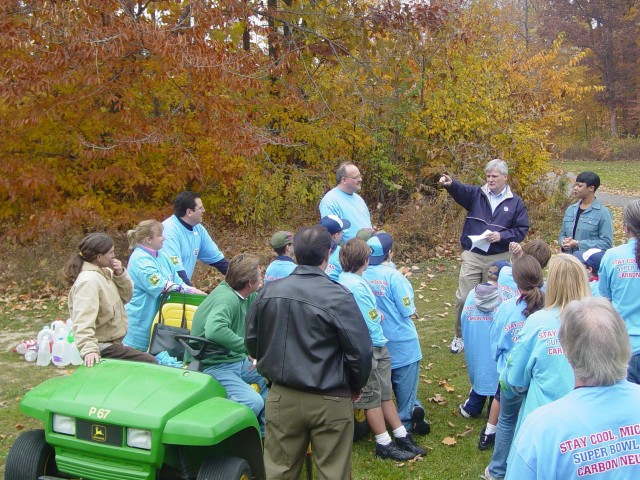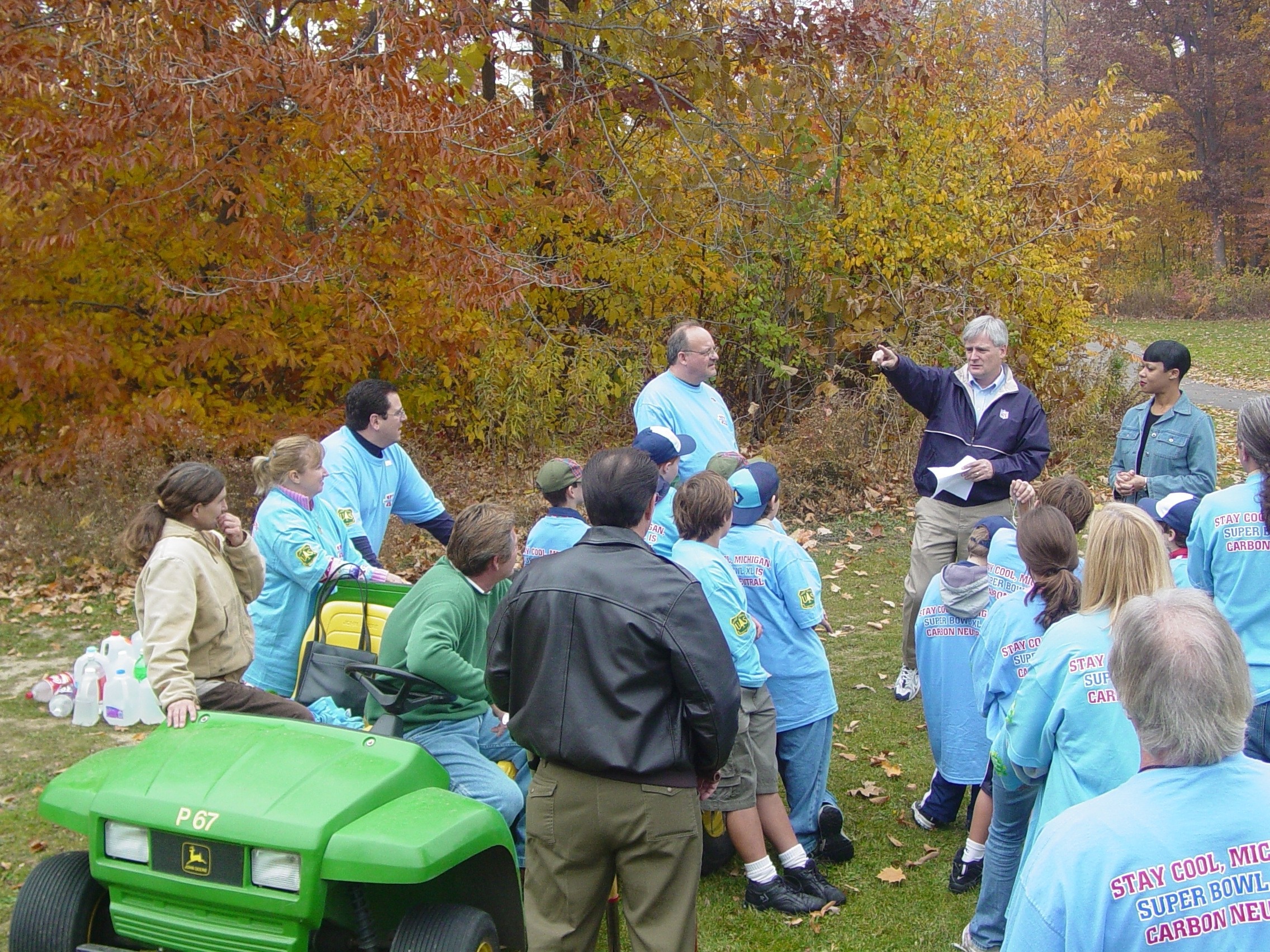WASHINGTON (Army News Service, March 23, 2007) - The Army took cues from the National Football League on reducing negative impacts on the environment during a lecture on sustainability hosted by the Army Environmental Policy Institute here last week.
Jack Groh, NFL environmental program director, explained the NFL's progress in incorporating environmental programs in cities that host such NFL events as the Super Bowl and Pro Bowl.
"One of the words that you'll hear around the NFL is legacy ... the legacy we leave behind in the community, what permanent improvement we leave, what we'll find when we go back three or five years from now," Groh said.
The NFL's environmental efforts began in 1994 with a goal to recycle trash at the Georgia Dome. Though it has since worked on numerous environmental issues, the league's "carbon neutral" program has gained the most attention, Groh said.
The program reduces carbon dioxide produced by NFL-related events through the planting of tree seedling. Such efforts netted a $200 thousand impact this year in Miami Gardens, Fla., where volunteers planted seedling to offset the greenhouse gas emissions created during the 2007 Super Bowl.
"We figured we needed about 350 trees to offset, but we decided to plant 3,000," Groh said. "We're going to keep it that way because we'd rather overdo it."
The Army is also going beyond the required environmental regulations, according to Karen Baker, an AEPI senior fellow. In 2004, the Army released "Army Strategy for the Environment," which shifted Army focus from a compliance-based approach to environmental management to the adoption of an emerging industry practice known as sustainability.
Sustainability recognizes the importance of land, air, water and energy to Army operations. Baker said the Army seeks to drive innovation and find greater cost savings by leveraging connections between mission, environment and community - a concept known as "the triple bottom line."
Several initiatives focus on energy savings from sustainable construction. Starting in 2008, the Army will require all new military construction to achieve the "Silver Rating" standard established by the U.S. Green Building Council's Leadership in Energy and Environmental Design Green Building Rating System. Another initiative, the Army's Residential Communities Initiative, is exploring ways to build more sustainable communities, to include the world's largest solar-powered community at Schofield Barracks, Hawaii.
Baker said the Army is teaming with civilian corporations who've embraced sustainability to learn how others are helping the environment.
"This isn't something we've invented in the Army, and the NFL is just one corporation we can learn from," she said. "We have been following what leaders in the industry and academia are doing, and that's why we started this lecture series."
Groh said he enjoyed the interaction with Army environmental officials because it gave him the opportunity to "steal" ideas for the future.
"What's so impressive about the Army's efforts is that they address a broad range of issues all at once. I think that's the way to do it, because you may not be instantly successful in every area, but if you are moving in that direction in every area some things are going to get resolved," he said.
"Let's face it, there isn't enough money in the world for the NFL or the Army or any other organization to buy their way out of environmental issues," Groh added. "It has to be a cooperative effort."


Social Sharing